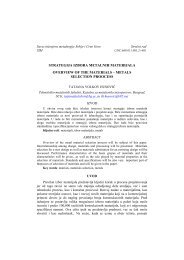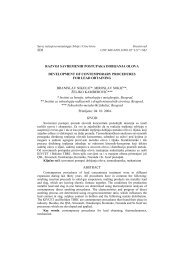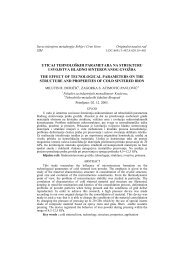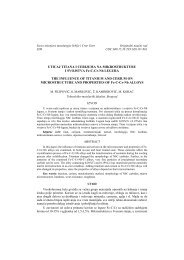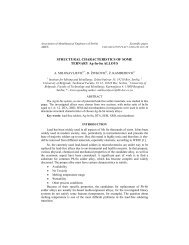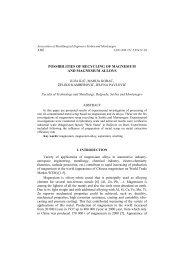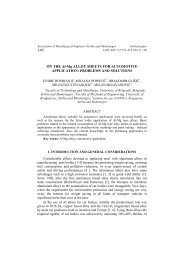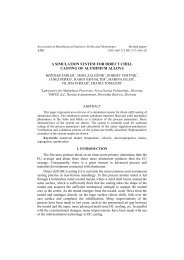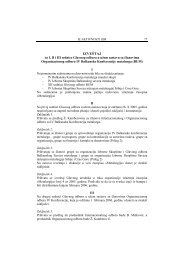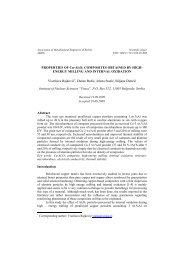THE INHIBITIVE EFFECT OF ETHANOLAMINE ON CORROSION ...
THE INHIBITIVE EFFECT OF ETHANOLAMINE ON CORROSION ...
THE INHIBITIVE EFFECT OF ETHANOLAMINE ON CORROSION ...
Create successful ePaper yourself
Turn your PDF publications into a flip-book with our unique Google optimized e-Paper software.
254 Metall. Mater. Eng. Vol 18 (4) 2012 p. 241-257<br />
Weight loss measurement<br />
Weight loss measurement is gravimetric method that was used to estimate<br />
inhibition efficiency of ethanolamine and to compare it with results obtained by<br />
electrochemical study. The inhibition efficiencies (IE%) of different concentration of<br />
ethanolamine are also calculated, after an immersion time of 24 h, from the total weight<br />
loss by the following equation [37]:<br />
IE<br />
WL −WL<br />
= ⋅ (10)<br />
0<br />
% 100<br />
WL0<br />
where WL 0 and WL are the weight losses of aluminium without and with the<br />
inhibitor added. The values of the inhibition efficiency calculated from weight loss<br />
measurements for aluminium in 3 wt. % NaCl at different concentrations of<br />
ethanolamine presented in Fig. 10.<br />
Fig. 10. Dependence of inhibition efficiency, IE, calculated from WL measurements, on<br />
ethanolamine concentrations for aluminium in 3 wt. % NaCl saturated with CO 2 .<br />
It can be seen from Fig. 10 that inhibition efficiency of ethanolamine reach a<br />
maximum value for concentration of 5 mM of ethanolamine, and further increase in<br />
inhibitor concentration decreases the inhibition efficiency. It can be noticed that the<br />
inhibition efficiency values obtained from weight loss (Fig. 10) and electrochemical<br />
measurements (Fig. 5) are comparable. This conclusion is supported by the previously




